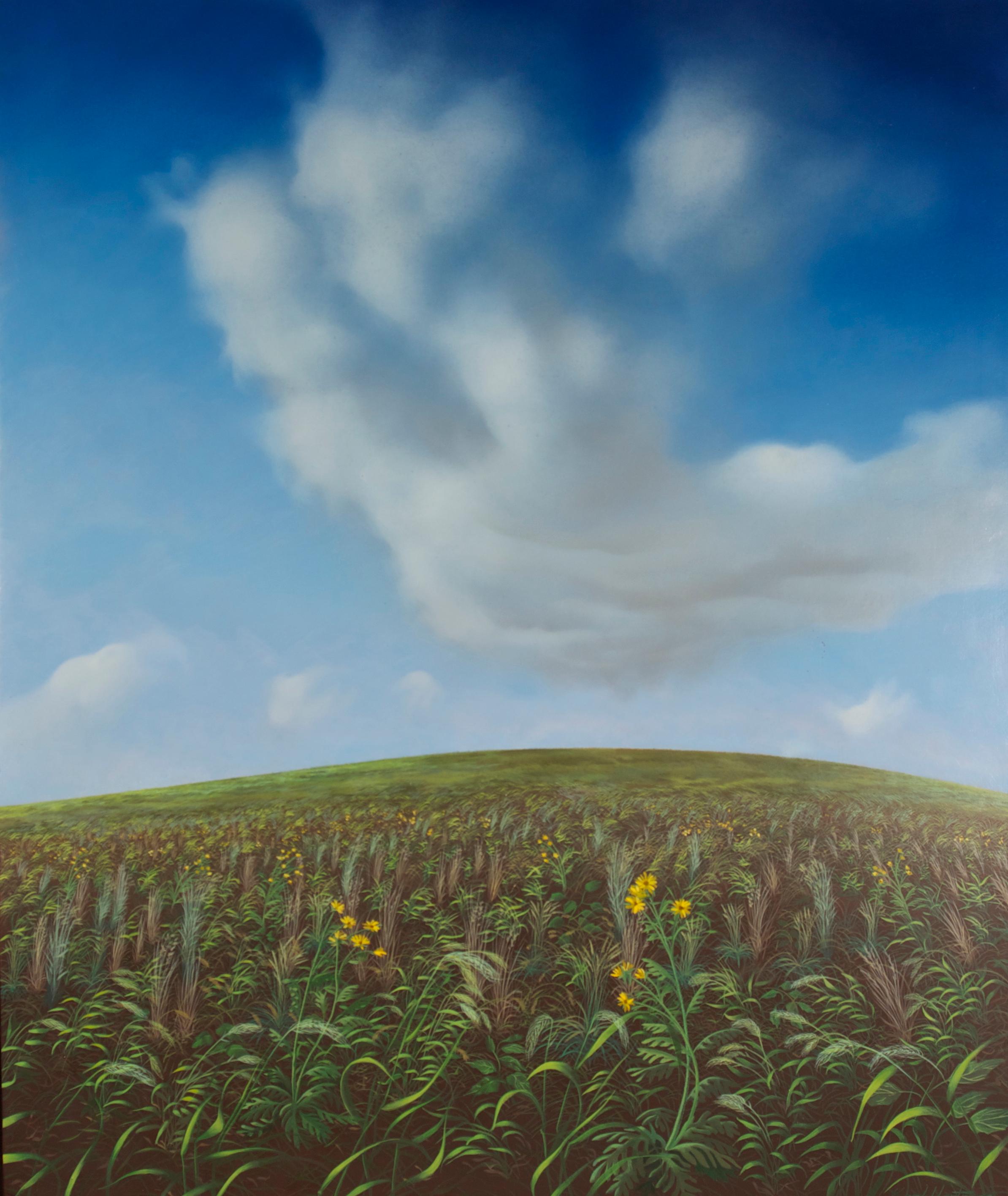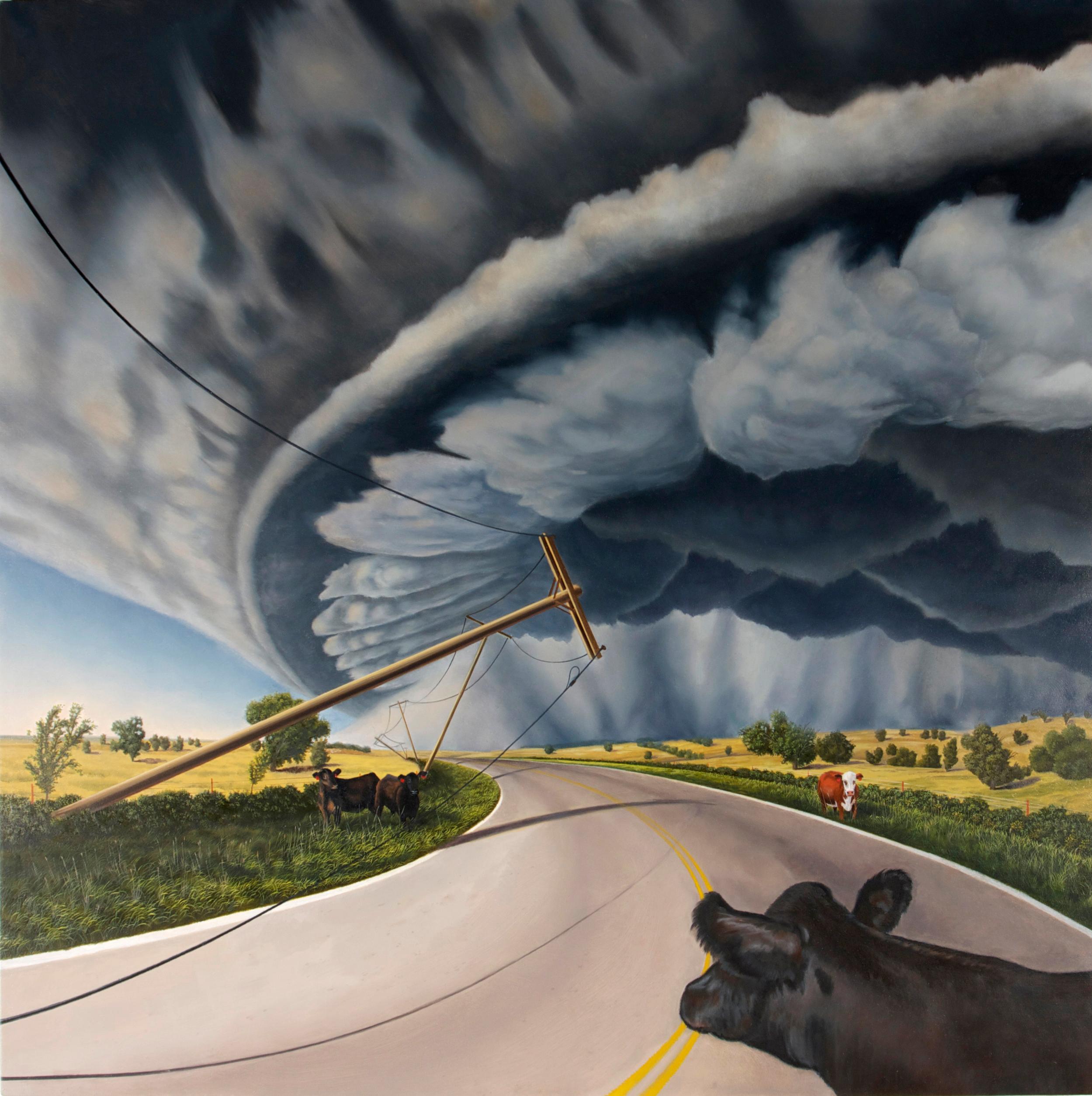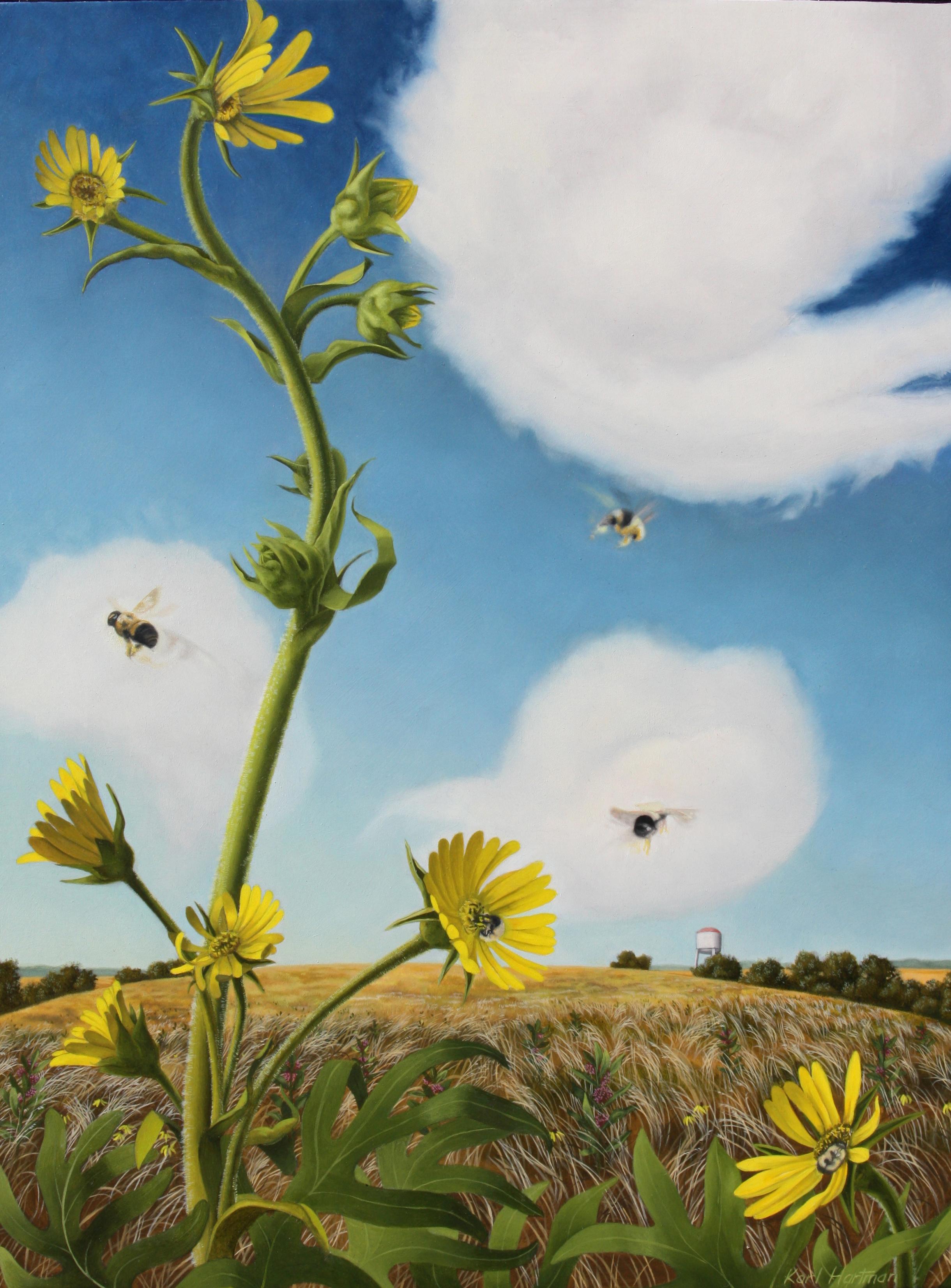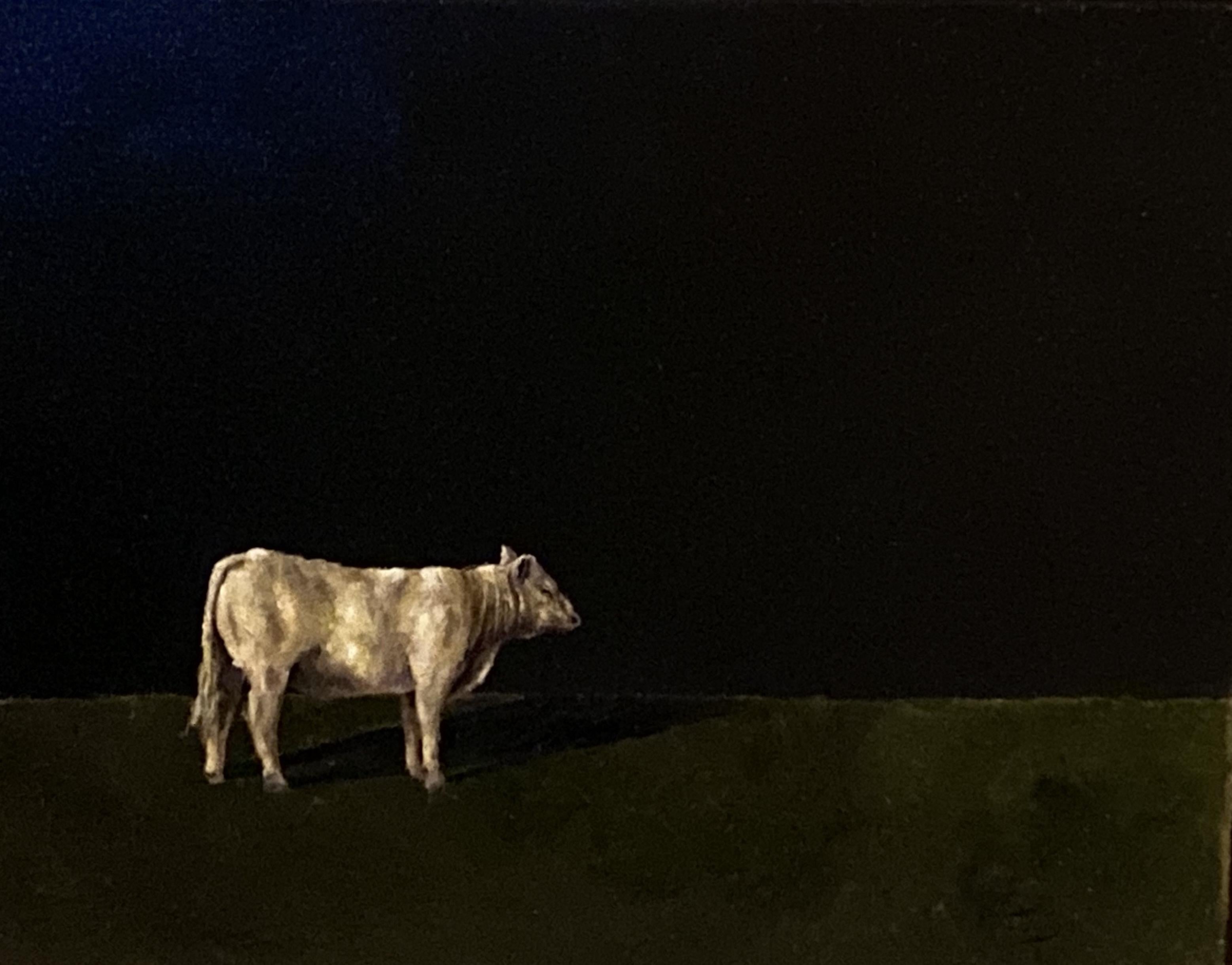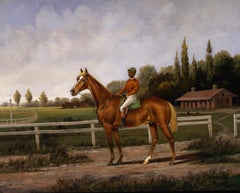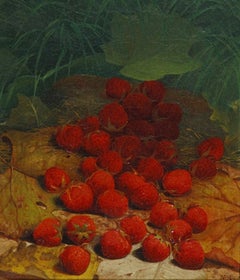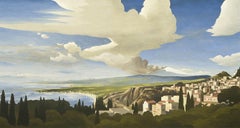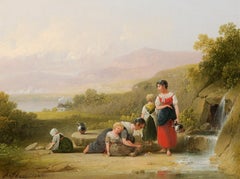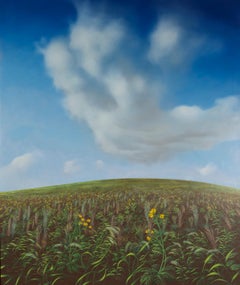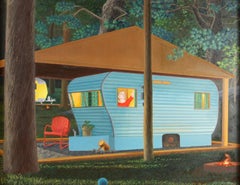Items Similar to The Intruder
Want more images or videos?
Request additional images or videos from the seller
1 of 8
Arthur Fitzwilliam TaitThe Intruder1864
1864
About the Item
Arthur Fitzwilliam Tait was born at Livesey Hall, near Liverpool, England, and began his career as a clerk at the gallery of Agnew & Zanetti’s Repository of Arts in Manchester. While there, he developed an interest in studying drawing, and he eventually became a teacher, lithographer, and draftsman. Through the influences of English sporting artists Edwin Landseer, Richard Ansdell, and William Huggins, Tait devoted himself exclusively to sporting painting. Upon his arrival in America in 1850, the artist began to develop a more naturalistic style.
Tait discovered the Adirondacks and the wide variety of animal life that inhabited its regions in 1852. The course of his career made an immediate turn at this point, as the plentiful opportunities for camping, sketching, and sporting afforded him by the rugged and untamed Adirondack landscape proved to be irresistible. Through his summers in the Adirondack Mountains, Tait became an avid outdoorsman, and participated in many of the activities he depicted in his paintings. Tait maintained a studio in New York, but at every opportunity he left for the Adirondacks, staying variously at Chateaugay and Loon Lake. Tait eventually found a number of ready buyers for his work. By the early 1860s, he moved out of New York to the suburb of Morrisania, thanks to the number of works of his sold by prominent New York art dealers, such as Samuel P. Avery and Michael Knoedler. In 1866, a single auction of 69 of his works earned him over $6,000, and later that year he established a long-term relationship with Louis Prang, who, along with Currier & Ives, sold a number of lithographs of Tait’s images over the years.
Beginning in 1860, Tait began to spend time on what is now called Antlers Point on Raquette Lake. By 1870, Tait was frustrated with the burgeoning tourism of the area, and he began to vacation instead on Long Lake, where he established a year-round residence from 1874 to 1877. He returned to the Raquette Lake area often, however, and some of his best works were painted there. When his first son was born in 1876, Tait devised a floating studio so that he could escape the rigors and distractions of his home life, and leave for several days at a time. From his waterborne cabin, Tait made detailed studies of the local fauna, which he observed at length with a telescope, and he sketched and painted from nature endlessly. By 1877, Tait returned to New York, but still returned frequently to his house on Long Lake. In 1880, his wife died during the birth of their second child, and her half-sister, who soon married Tait, did not enjoy life in the mountains. In 1882, Tait sold his Long Lake house, thus closing the Adirondack chapter of his life.
Tait was particularly productive in the year of 1864. In his checklist of the artist’s work, Henry F. Marsh records seventy-eight oil paintings from that year, including The Intruder (Cadbury and Marsh, loc. cit.). Several of these works include spaniels and woodcocks, as does the present painting.
The Intruder bears a strong resemblance to the work of the great British animal painter, Sir Edwin Landseer. As Warder H. Cadbury has written:
In this century Tait has occasionally been called by journalists the Landseer of America in a well-intentioned tribute to his talent as an animal painter. However, since both artists painted many canvases of deer, it is important not to mistake Landseer’s influence upon Tait’s style. . . . From the start [Tait] eschewed the anthropomorphic melodrama, pathos, humor, sentimentality, and metaphysical allegory that characterized so much of Landseer’s popular work. According to family tradition, Tait admired Landseer’s genius but felt that he “prettied” his animals too much. Tait’s debt to him may have been largely economic; by popularizing animal and sporting art throughout the English-speaking world, Landseer helped create a market for Tait’s canvases with similar themes but a quite different manner (ibid., p. 18).
The early provenance of the present painting was recorded by Tait in his register of paintings, which reads: “[No.] 328. Cocker Spaniel & 3 Woodcock 20 x 14 on panel. Williams & Everett” (ibid., p. 245). Tait had maintained a strong relationship with the Williams & Everett gallery in Boston since about 1863, the year before the present picture was painted. That year, the gallery sold seven of Tait’s works, followed by seventeen in 1864, possibly including the present painting. Williams & Everett, the only free gallery in Boston, provided Tait a foothold in the Boston market for many years.
- Creator:Arthur Fitzwilliam Tait (1819-1905, American)
- Creation Year:1864
- Dimensions:Height: 13.75 in (34.93 cm)Width: 20 in (50.8 cm)
- Medium:
- Movement & Style:
- Period:
- Condition:
- Gallery Location:New York, NY
- Reference Number:Seller: APG 85001stDibs: LU234656152
About the Seller
5.0
Recognized Seller
These prestigious sellers are industry leaders and represent the highest echelon for item quality and design.
Established in 1952
1stDibs seller since 2010
34 sales on 1stDibs
Typical response time: 7 hours
Associations
Art Dealers Association of America
- ShippingRetrieving quote...Shipping from: New York, NY
- Return Policy
Authenticity Guarantee
In the unlikely event there’s an issue with an item’s authenticity, contact us within 1 year for a full refund. DetailsMoney-Back Guarantee
If your item is not as described, is damaged in transit, or does not arrive, contact us within 7 days for a full refund. Details24-Hour Cancellation
You have a 24-hour grace period in which to reconsider your purchase, with no questions asked.Vetted Professional Sellers
Our world-class sellers must adhere to strict standards for service and quality, maintaining the integrity of our listings.Price-Match Guarantee
If you find that a seller listed the same item for a lower price elsewhere, we’ll match it.Trusted Global Delivery
Our best-in-class carrier network provides specialized shipping options worldwide, including custom delivery.More From This Seller
View AllChestnut Racehorse with a Jockey Up On a Training Strap
By Henry H. Cross
Located in New York, NY
It was Henry Cross's portraits of horses belonging to the prominent breeders and trainers of the second half of the nineteenth century that won the artist renown as an animal painter. Born and raised in upstate New York, Cross's proficiency in both drafting and caricature was revealed while he was still a student at the Binghamton Academy, New York. In 1852, when he was only fifteen years old, Cross joined a traveling circus that took him to Minneapolis, Minnesota, and to the first of many Indian encampments that he would draw upon for subject matter throughout his career. Biographers differ as to the year Cross left for Europe, however, he was in Paris from 1852 to 1853 or 1854, where he studied with Rosa Bonheur, a highly esteemed French painter of horses. Upon Cross's return to the United States he was commissioned to paint the studs of wealthy horsemen, including those of Commodore Cornelius Vanderbilt, Robert Bonner, the owner-publisher of The New York Ledger, and "Copper King" Marcus Daly, whose 18,000 acre stock farm was reputed to be the greatest and most valuable horse ranch in the world.
Although Cross received the highest pay of any equine artist of his day (up to $35,000. for one order, according to The Horse Review of April 10, 1918, p. 328), he frequently joined traveling circuses and painted the locales where they visited. He also painted portraits of notable contemporaries, such as President Abraham Lincoln, ex-president Ulysses S. Grant, King Edward VII of England, W. F. "Buffalo Bill...
Category
19th Century American Realist Animal Paintings
Materials
Oil, Canvas
Strawberries Strewn on a Forest Floor
By William Mason Brown
Located in New York, NY
William Mason Brown was born in Troy, New York, where he studied for several years with local artists, including the leading portraitist there, Abel Buel Moore. In 1850, he moved to ...
Category
19th Century American Realist Landscape Paintings
Materials
Oil, Canvas
Mt. Etna from Taormina
By Thomas Fransioli
Located in New York, NY
Thomas Fransioli, born in 1906 in Seattle, Washington, trained as an architect at the University of Pennsylvania. He worked as an architect before his service in World War II. Largel...
Category
20th Century American Realist Landscape Paintings
Materials
Oil, Canvas
At the Spring
By Joshua Shaw
Located in New York, NY
Joshua Shaw was a farmer’s son, born in Billingborough, Lincolnshire, and orphaned at the age of seven. After a boyhood of privation, he tried a number of occupations, until he finally apprenticed to a sign painter and found his métier. Shaw went to Manchester to study art, and by 1802 was in Bath, painting landscapes. In that year he began to exhibit his work at the Royal Academy in London. Essentially self-taught, Shaw achieved an impressive level of competence and versatility, producing portraits, floral compositions, still lifes, landscapes, and, cattle pieces. Shaw continued to send works for exhibition at the Royal Academy, the British Institution, and the Suffolk Street Gallery, all in London, until 1841. (Although Shaw is regularly mentioned and frequently illustrated in a host of general books on American art history, as well as included in numerous historical survey exhibitions, the only monographic study of this artist is Miriam Carroll Woods, “Joshua Shaw [1776–1860]: A Study of the Artist and his Paintings” [M.A. thesis, University of California at Los Angeles, 1971]. Apart from short biographical sketches in various dictionaries and museum collection catalogues, the two most interesting references, both contemporary, are John Sartain’s personal recollections in The Reminiscences of a Very Old Man, 1808–1897 [1899; reprint 1969] and an article in Scientific American from August 7, 1869, “Joshua Shaw, Artist and Inventor.” The article quotes extensively from an autobiographical document in the possession of Shaw’s grandson that Shaw prepared for William Dunlap...
Category
19th Century American Realist Landscape Paintings
Materials
Oil, Canvas
View of Gravesend Bay
Located in New York, NY
Thomas Satterwhite Noble, who studied in France with Thomas Couture for three years, adapted his master’s genre style to American subjects. Born on his parents’ plantation in Kentucky in 1835, Noble was the son of a wealthy rope manufacturer. His early upbringing in Lexington, the center of that state’s slave trade in the antebellum South...
Category
Early 20th Century American Realist Landscape Paintings
Materials
Oil, Canvas
Figure in a Landscape
By David Johnson
Located in New York, NY
Signed (at lower right): DJ [monogram]; (on back): David Johnson 1865
Category
Mid-19th Century American Realist Landscape Paintings
Materials
Oil, Board
You May Also Like
Drifting Cumulus, surrealist pastoral oil painting
Located in New York, NY
Both spare and dynamic, Karl Hartman’s hyper-saturated countrysides and surreal depictions of Americana perfectly match the vividness of our late-summer h...
Category
2010s American Realist Animal Paintings
Materials
Oil, Wood Panel
Dogwood Lake, surrealist pastoral oil painting
Located in New York, NY
Both spare and dynamic, Karl Hartman’s hyper-saturated countrysides and surreal depictions of Americana perfectly match the vividness of our late-summer h...
Category
2010s American Realist Animal Paintings
Materials
Oil, Wood Panel
Gust Front, realist landscape Americana oil painting, 2018
Located in New York, NY
Karl Hartman gives primacy to the sparsity of form in his Mid-Western prairie landscapes. Simple and earnest, saturated primary hues and decisive lines ad...
Category
2010s American Realist Landscape Paintings
Materials
Wood Panel, Oil
Bee Smoker, surrealist pastoral oil painting
Located in New York, NY
Both spare and dynamic, Karl Hartman’s hyper-saturated countrysides and surreal depictions of Americana perfectly match the vividness of our late-summer heatwave. Hartman’s tightly c...
Category
2010s American Realist Animal Paintings
Materials
Oil, Panel
Bees and Compass Flower, surrealist pastoral oil painting
Located in New York, NY
Both spare and dynamic, Karl Hartman’s hyper-saturated countrysides and surreal depictions of Americana perfectly match the vividness of our late-summer heatwave. Hartman’s tightly c...
Category
2010s American Realist Animal Paintings
Materials
Oil, Panel
Pondering Realist, Light/ Shadow Oil Painting 20"x16" Landscape Cattle
By Luke Autrey
Located in Houston, TX
Pondering Realist, Light/ Shadow Oil Painting 20"x16" Landscape Cattle . The eighth painting shows how the painting will be after a professional photo by 2/14.. The next is the f...
Category
2010s American Realist Animal Paintings
Materials
Oil, Panel
Recently Viewed
View AllMore Ways To Browse
The Anthropomorphic
Summer At The Lake
Art From The Adirondacks
Allegory America
Paintings In The Adirondacks
Register Panel
Provence Market Paintings
Anthropomorphic Animals
F Michael Wood
Adirondack Oil Paintings
Clerk Of Works
Anthropomorphic Oil Painting
Arthur William Best
Currier Gallery Of Art
Deer Panel
English Spaniel
Antique Deer Painting
Anthropomorphic Landscape
